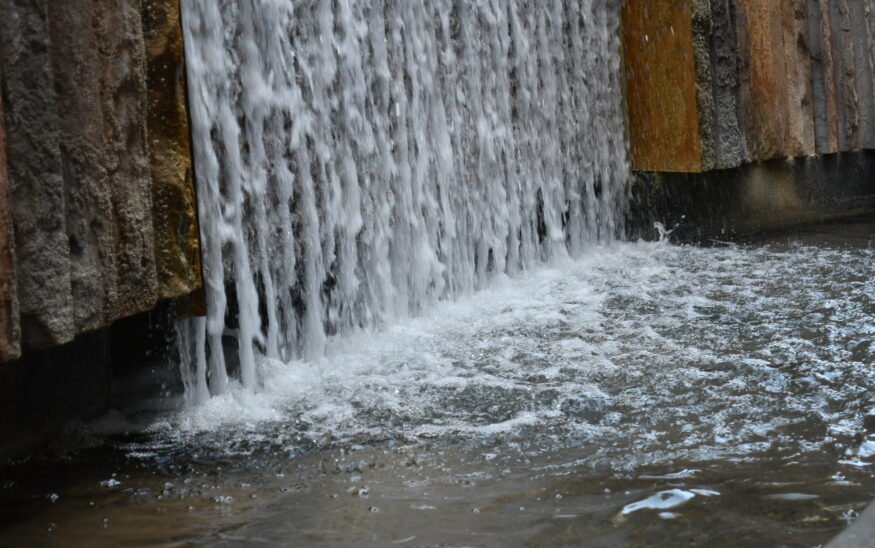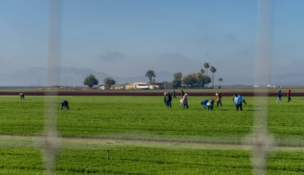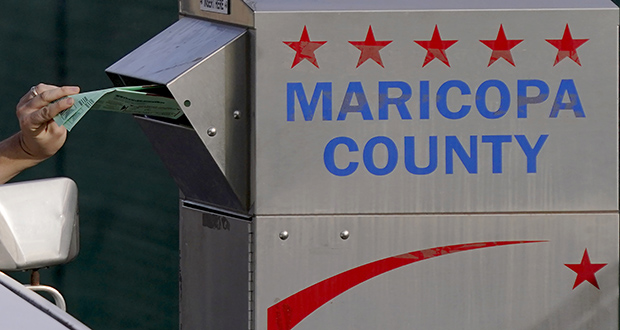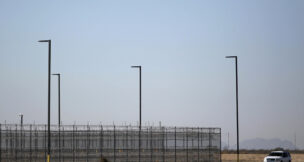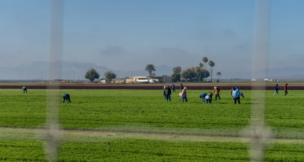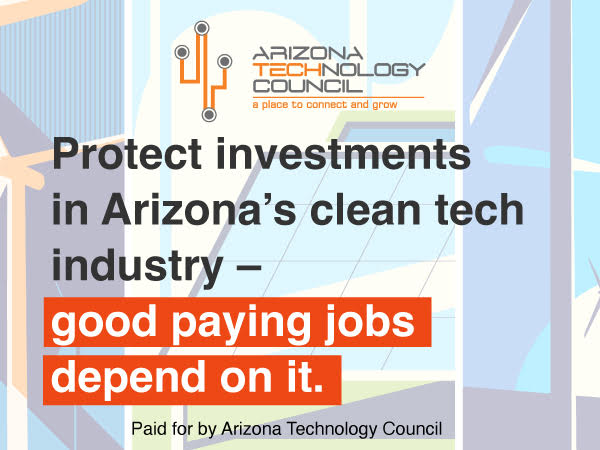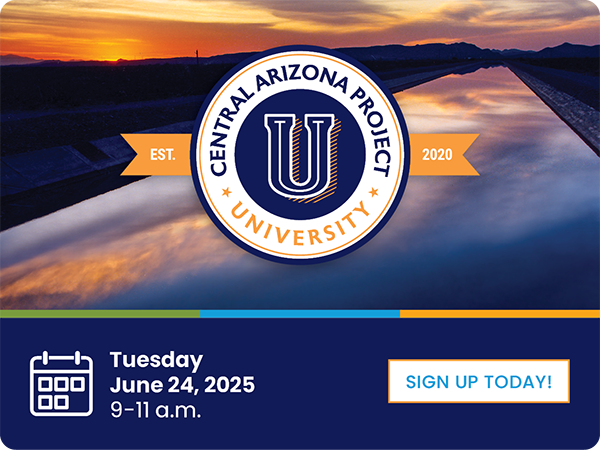Water Infrastructure Finance Authority OKs 2 projects to increase AZ water supply
Bob Christie, Associated Press//November 20, 2025//
Water Infrastructure Finance Authority OKs 2 projects to increase AZ water supply
Bob Christie, Associated Press//November 20, 2025//
Key Points:
-
WIFA approves at least two desalination plants in California or Mexico
-
Other proposals include treating wastewater and capturing storm water
-
New water would not be available until early to mid-2030s
Arizona will provide taxpayer money to help private companies develop plans for at least two and possibly three desalination plants in California or Mexico under proposals approved by a state agency’s board on Nov. 19.
The Water Infrastructure Finance Authority board also approved initial development of several other projects from the two applicants that proposed new Arizona water supplies and had passed a lengthy review process. Those proposals would rely on treating wastewater, capturing storm water and storing it underground or making agricultural irrigation more efficient, with the projects located in California, Colorado, Utah or Mexico.
Both the desalination plants and the remaining projects envision trading that new water for Colorado River allocations currently used by those states or Mexico.
The amount of money the state will pay the companies involved to develop their proposals further isn’t known. Instead, the state agency will issue “task orders” in the coming months and determine how much it will pay for each project to be fleshed out.
And the water won’t come quickly: The earliest a proposal could supply any new water is in 2028, but most aim for the early to mid-2030s to begin deliveries.
No cost estimates for the projects were immediately released, but previous desalination proposals were expected to cost between $5 billion and $10 billion each to develop.
All told, Arizona’s water supplies could be boosted by between 427,000 acre feet and 1.6 million acre feet a year if all the projects were implemented. An acre foot is about 326,000 gallons – enough water to cover an acre of land one foot deep and typically enough to supply three homes for a year.
The moves by the agency known as WIFA come as the state faces additional cutbacks in its Colorado River supplies, and as its existing groundwater sources are stressed to the limit. The unanimous vote by the 9-member board and the release of the proposals mark the first time the public has seen any details of the projects proposed to WIFA over the summer and reviewed in secret by agency staff and by a WIFA committee last week.
Chelsea McGuire, WIFA’s executive director, told reporters after the meeting that, three years after the Legislature expanded the agency’s mission to include finding new water, she was excited to reach the point where the agency is acting to secure new supplies.
“These are real projects, this is no longer a hypothetical,” McGuire said. “This is no longer something that someone is dreaming of in a room somewhere.”
Not considered by the board at the latest meeting was a proposal by water provider EPCOR to import water from a controversial project in the southeastern California desert under development for decades by a company called Cadiz Inc.
Cadiz owns a large swath of remote desert land about 60 miles west of Parker, Arizona. The company has worked for more than three decades to tap a large and ancient underground aquifer as a water source for thirsty California cities but has faced fervent opposition from conservation groups and state political leaders.
Environmental groups turned out in force at the Nov. 19 meeting to urge the WIFA board not to approve the Cadiz project, only to learn that a board committee that reviewed the projects in secret last week had recommended against approval.
“That one’s over, we’re not doing that,” board member David Becham said.
What remained were three other projects proposed by EPCOR, which provides water in multiple areas of the state, including San Tan Valley, Sun City and Paradise Valley, and four by a group led by a Spanish company.
EPCOR is proposing a desalination plant in Baja California that would produce between 167,000 and 500,000 acre feet of water per year by 2034.
The water would be delivered by pipeline to the Colorado River at the U.S.-Mexico border and allowed to flow into Mexico. In return, Arizona would get to take that amount of water out of the river farther north and send it to the Phoenix and Tucson areas through the Central Arizona Project canal.
The other desalination proposals approved for funding on Nov. 19 are from the ACCIONA-Fengate Water Augmentation Alliance.
Acciona develops plants worldwide, and Fengate Capital specializes in infrastructure investment. Acciona won a contract last December to design and build a desalination plant in Dana Point, Calif.
The partnership actually made two desalination plant proposals, according to one-page project outlines provided by WIFA
Under the first, it would build a new plant in Baja California that would supply 150,000 acre feet of water a year by 2034. The water would be delivered through existing Colorado River water delivery systems or directly exchanged with Mexico for its river allocations.
The second desalination proposal is more general, with the Acciona alliance proposing to use “new or existing” plants in California or Mexico to deliver between 50,000 and 200,000 acre feet of water per year by 2031. That water would be swapped for part of Mexico’s Colorado River supply.
Both EPCOR and the Acciona group applied for state money to create new supplies in other ways.
EPCOR wants to invest in and develop projects in California.
It envisions capturing excess runoff in California’s Sacramento-San Joaquin Delta and other sources and storing it underground for later use. In exchange for that 10,000 to 100,000 acre feet of water per year, Arizona would get part of that state’s Colorado River supply.
It also proposes adding a new plant to further treat wastewater from an existing sewage treatment plant near San Diego to drinking water quality in exchange for part of that region’s Colorado River supply. It hopes to net between 14,000 and 95,000 acre feet of new water.
The Acciona group has a similar “toilet to tap” proposal, hoping to treat wastewater in Mexico and Colorado to high quality, freeing up between 20,000 and 130,000 acre feet of Colorado River water those areas would normally use.
Acciona also wants to invest in improving the efficiency of irrigation operations in Mexico, California and Utah in hopes of obtaining between 16,000 and 466,000 acre feet of water from those areas between 2028 and 2037.
Ted Cooke, a board member who led the WIFA’s board committee that evaluated the projects, said finding and developing new water supplies for Arizona required a private public partnership the board is now embarking upon.
“We need private equity to get this done,” he said.
“We need private expertise to get this done,” Cooke said while explaining one of his votes. “WIFA cannot operate a plant, WIFA cannot build a plant, WIFA cannot finance this on our own.”

